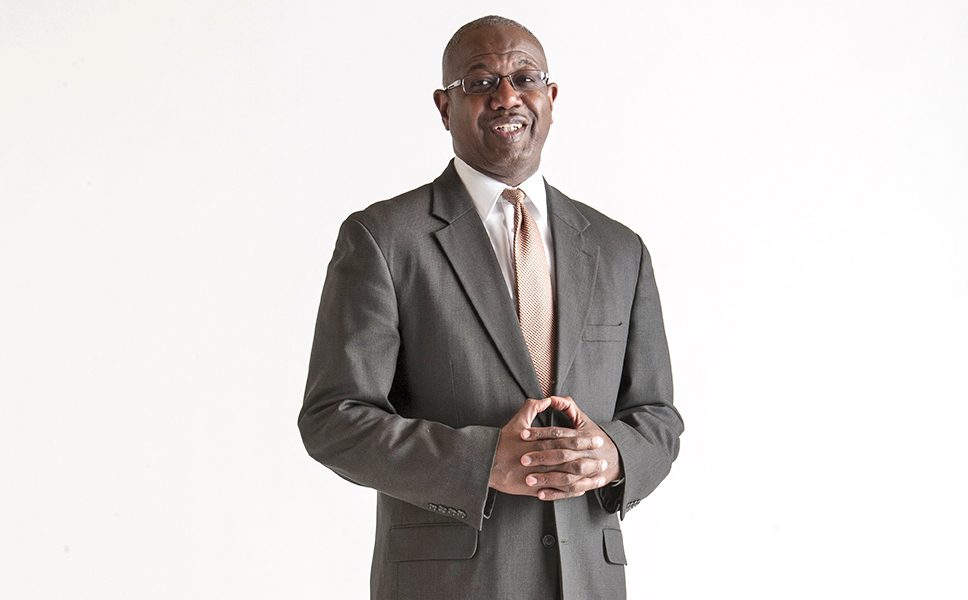News & Community
Cameo: Ricky Smith
We talk to the CEO of Baltimore-Washington International Thurgood Marshall Airport.
What’s BWI’s position in the industry?
We’re the 22nd busiest airport in the country, and that’s out of over 500 commercial airports. Last year, we had a record-breaking year with almost 24 million passengers flying out of BWI, and about 1.1 million of those were international passengers—that was also a record. This year is following suit. So we’ve become more than just a regional airport. We’re the busiest airport in the Washington-Baltimore area. We’re outpacing both Dulles and [Reagan] National in terms of passengers.
Is the growth due to the proliferation of low-cost international carriers?
Exactly. WOW Air, Condor, Southwest Airlines emerging into the international market. Our plan is to continue our position as the low-fare option for this region.
What do you think is the most exotic destination that people can get to from BWI?
We have several. Look at Southwest’s service to Latin America, or anytime you can take a flight [via Norwegian Air Shuttle] to Martinique. I think that’s a pretty exotic place. But, if you want to fly nonstop to Reykjavik [via WOW Air], I mean, that’s a pretty neat place to go to as well.
What about commercial service to Cuba?
I don’t see that happening in the near future. We just had a scheduled charter service to Cuba that didn’t go very well. So we decided to step back, regroup. We’re looking for the right carrier to re-launch that service.
Do you get to go to these places when you’re recruiting business for BWI?
That’s not something I get to do. We do have a personalized air service team who occasionally have to go and kind of kick the tires [of a new partner airport] and get a chance to go to someplace like Costa Rica just to see what it feels like. That’s not a bad job.
Recently, BWI has had local musicians play concerts at baggage claim. What’s that about?
Over the years, we’ve learned that, although people come to the airport to fly, they want to feel a sense of place when they get here. So art in many forms—musical, static, or digital art—that gives the customer something to escape from the angst that comes with rushing through an airport.
What other new projects can travelers expect?
Airports are always under construction because we’re in such a dynamic environment. Today, to try to keep track with Southwest Airlines’ growth—and a number of other carriers—we have to add additional capacity. And so we have our Concourse D and Concourse E Connector. That project will introduce additional gates to accommodate both domestic and some international service. It will also allow us to introduce more food and retail concepts. That should open initially later this year and be completed totally sometime early next year. We also have an expansion to our Concourse E facility. That’s our international facility. We’re adding six gates to that facility to accommodate international service.
Speaking of food and retail, what have customers been demanding? More local food options? More high-end options?
A lot of our customers want local options. People who are coming in from out of town, they want to feel Baltimore and Washington when they come in. People that live in this area, they want to see the taste of their community in the airport, but there’s also a significant segment of the population that wants to see brands that they’re familiar with—so Chick-fil-A, those kinds of brands, we’re planning very soon to bring online. They want healthy options. That’s a growing demand. We try to understand what they want, and we do our best to go out and try to find operates that can bring those concepts here.
BWI airport serves two very distinct metro areas, how do you balance representing both of them?
Generally, our surveys include all of our passengers—D.C. passengers, passenger from the Baltimore metropolitan area, and even passengers from southern Pennsylvania. They are all part of one general survey, so we look at consensus. And that consensus reflects what flyers from all of those populations tend to want. I don’t know that there’s a difference between what someone in D.C. might want as opposed to what somebody in Baltimore might want. So we haven’t had an issue with that. But we do try to make sure, however, that Baltimore-Washington [BWI] reflects D.C. because that’s a battleground market for us. And to the extent that we can have passengers in the Washington metropolitan area feel more comfortable with BWI Marshall, then that makes us a more attractive option for those flyers.
Where were you before you came to BWI?
I started in BWI back in 1990 as the budget manager. I spent a few years there then I bounced around, spent some time in operations, overseeing planning and engineering and marketing, and then I left for a year and a half or so and became the deputy administrator for the Maryland Highway Administration. I stayed there for a couple years then I returned to BWI for about two years when the opportunity to go to Cleveland emerged back in 2006. So I left BWI, went to Cleveland as the CEO there, stayed there for nine years until August of last year and then Governor Hogan asked if I would return home to BWI, and it’s probably one of the most exciting decisions I’ve made in my life.
So are you from Baltimore originally?
Yes, I actually grew up on Whitelock Street, not far from the area where the unrest occurred, Penn North. I went to Baltimore City Public Schools, graduated from Howard University in D.C., went to Loyola University of Maryland in Baltimore. So yes, I am. Baltimore is home.
